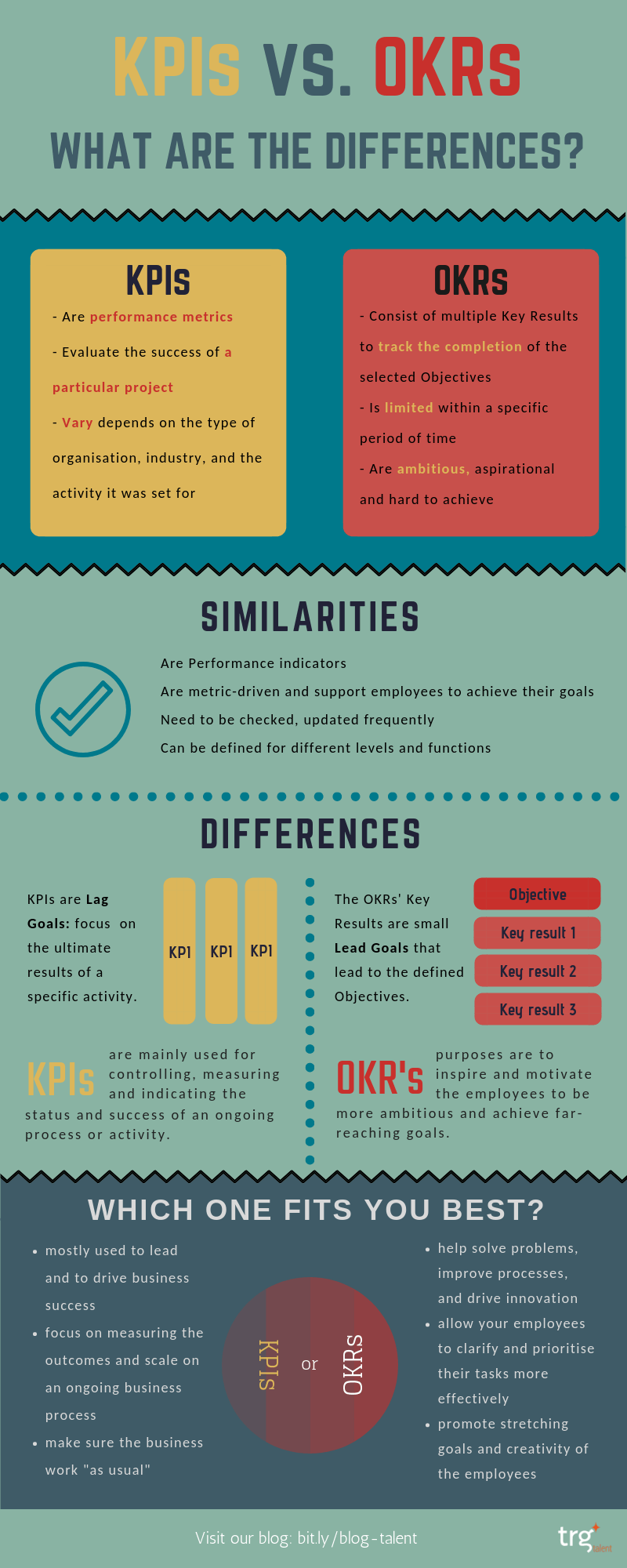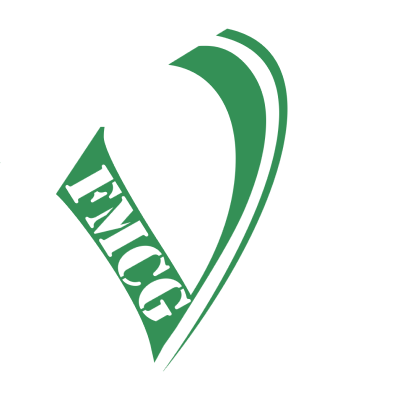OKRs stand for Objectives and Key Results and were initially invented in the 1970s by executives in Intel and Oracle by combining traditional management and goal-setting approaches such as MBOs (Management by Objectives) and SMART Objectives. OKRs gained its popularity after it was introduced to Google by investor John Doerr and is used at Google until today.
Objectives and Key Results is a management framework used to set an organisation’s objectives and describe the key results that are used to measure the progress towards those objectives. In other words, OKR is a collaborative and agile approach that supports setting corporate goals, creating focus, alignment, accountability, and acceleration.
A typical OKR comprises an Objective, and two and five Key Results to measure progress towards the specified Objective.
Objectives are the broad descriptions of the desired goals for the entire company. It sets out clear directions so that each and every employee in the organisation can follow and thrive for success.
Objectives can be seen as the ultimate destination after a period of time. They should be achievable, clear, ambitious and inspirational. Moreover, it can be easily mistaken that OKRs are an evaluation tool while they mostly serve as a base for the development of new objectives.
Key results are the metrics that determine the objectives and the journey to achieve these goals. Key results can be seen as milestones towards the objectives. This means these key results must be formulated concretely and be measurable for management so that the accomplishment of the objectives can be measured and evaluated afterwards.
ORKs is crucial in maintaining a clear understanding of the company’s objectives internally and guiding the employees to work towards these objectives. Based on OKRs, managers and employees are able to align their work and their goals with the corporate vision. From the employee’s view, transparency is a necessity for effective alignment, therefore, having clear workflows and operations will effectively connect teams and individuals together.
As explained above, the key results should be measurable and able to support the evaluation of the final outcomes when compared with the specified objectives. Moreover, the OKRs when combining with Key performance indicators (KPIs) will increase the monitor capability of the management and help the staff keep track of their progress more advantageously.
Since OKRs are made approachable for everyone in the organisation, the accountability and transparency of the initiatives are promoted, thus, the responsibility of each individual is significantly increased.
For example, at Google, OKRs are graded quarterly and applied with the scale from 0 to 1. However, employees do not have to hit the perfect scores all the time. Google believes that having a score between 0.6 and 0.7 means that you are making good progress. As a matter of fact, if you achieve the OKRs target easily, it could mean that you have set your goals too low. The evaluation process after each quarter is a good occasion for the employees to take account for the performance and analyse their improvement.
Objectives and key results are set up to make sure the employees are able to understand how much their efforts will contribute to the business’s success while staying aligned with the values and priorities of the organisation. It is important to let your employees know how their day-to-day tasks can have impacts on the organisation’s success in the long-term, regardless of their roles.
Objectives are qualitative descriptions of what the organisation aim to achieve, they help you to outline the path that leads to your targeted results. They answer the question: “What are the most important priorities of your organisation right now?”
These goals should be difficult to complete, but not impossible. In other words, the chosen objectives must be actionable, motivate the team and push them to achieve bigger results and more innovative accomplishments.
Key results come along with the objectives that you had decided on. Ideally, there should be 3-4 key results that enable you to measure the progress towards the objectives. The most important characteristic when it comes to creating key results is making sure that they are numerically-based or that they are measurable because they are the factors that define the success or failure of reaching the objectives.
Key results’ metrics can be combined with other metric-centric indicators such as key performance indicators to better clarify its criteria and measure the end result of a series of tasks.
Typically, OKR’s results are graded with a binary system “0 or 1”. This means if your team scored 0.3 or 30 per cent, they are underperforming their target. Meanwhile, a score of 0.7 or 70 per cent is considered a success because, normally, OKRs’ objectives are long-term or “stretch goals” that will take longer than a quarter to achieve.
Imagine that you have concluded the next objective is “Delight more customers” for your Marketing team. To achieve this, you need to go through with the team and finalise with a set of Key results that, altogether, lead to your desired outcome.
Objective: delight more customers
Key Results:
When creating objectives, bear in mind that they must be aligned with your business purposes, as well as the other objectives in the organisation. It is important that all your employees are able to understand and adopt the organisation’s core values and priorities as their own.
The key results are advised to follow the S.M.A.R.T model - specific for everyone's comprehension, measurable, achievable, relevant to your OKR’s objectives, and time-bound.
Key results are the outcomes you want to attain, which can be measured or graded. However, key results are not made to describe the specific tasks that lead to these results.
After setting up your OKRs, reevaluate them to examine which factors actually added values and which failed your expectations.
Check each element’s key characteristic again: Are the objectives ambitious enough? Are the key results measurable? Are all the OKRs had been carried out? Are they aligned with your business strategy?
The OKRs are created with the purpose of motivating the employees, not draining out their life force. In addition, some organisations make the mistake of finalising the OKRs among the top management level but completely disregard the buy-in from their subordinates.
OKRs are not about listing out every single task that you and your team need to do. Tasks that belong to the "daily routine", such as setting up tables and chairs for an internal event, fixing bugs in your IT systems, etc. need not to be included in your quarterly OKRs.
The main reason for OKRs to be effective is that they are created with specific goals, qualifiable numbers which are regularly and closely monitored by a designated person, or team.
What organisations need to do to resolve the above issues? Read our article to find out!
Although KPIs and OKRs are both used to define goals and track the outcomes for both of the employees and organisation, at the very core, they are not the same.

Subscribe to TRG Blog for instant updates on the latest news and trends in the business world.
Simply fill in the form on your right hand side.
TRG provided great service and solutions for our recruitment and performance management process. TRG consultants are equipped with very good knowledge and have been very supportive.

Nguyen Tuan Long CapitaLand Vietnam
[TRG consultants] are devoted to supporting our HR team for the best results by thoroughly introducing the solutions, step by step guiding how to use the assessments, simplifying the guideline for users, and on-the-job training to optimise the TRG Talent products.

HR Manager FMCG Viet
IT, Talent and F&B - we think it's a great combination.
We've thrived since 1994 resulting in lots of experience to share, we are beyond a companion, to more than 1,000 clients in 80+ countries.

© 2023 TRG International. Privacy Policy / Тerms & Conditions / Site map / Contact Us
TRG encourages websites and blogs to link to its web pages. Articles may be republished without alteration with the attribution statement "This article was first published by TRG International (www.trginternational.com)" and a clickable link back to the website.
We are changing support for TLS 1.0 and older browsers. Please check our list of supported browsers.